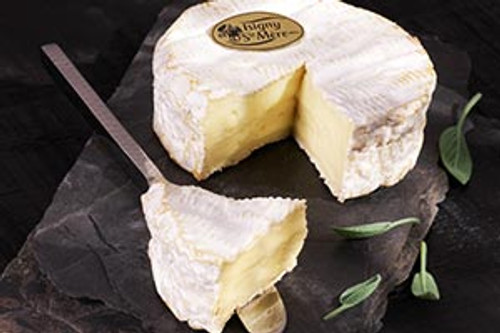Marie Harel is credited with the original production of Camembert in Normandy, northern France, in 1791. However, today only a very small number of producers still make a raw milk Camembert according to the same methods that Harel would have used. Those that do, under AOC (name protected) rules can legally call their cheese Camembert Normandie.
However, production of Camembert now extends well beyond AOC designation and there are very good Camembert made in Normandie from pasteurized milk, of which Le Châtelain is one.
Le Châtelain is made to a recipe similar to the one designated under AOC guidelines, except that the milk is pasteurized. Curds are ladled carefully into the molds in order to preserve as much moisture as possible and left to drain naturally under their own weight. After several hours they are firm enough to be unmolded and moved to a drying room. Here, they are turned every 48 hours to ensure the even distribution of moisture throughout the cheese and a slight drying of the surface. This encourages growth of the Penicillium Candidum mold and the formation of the white, bloomy rind. Cheeses are then transferred to a maturing room for futher aging.
The texture of Camembert should be supple, yielding and consistent throughout - with no chalky stripe in the middle. The color of the interior paste is a deep, golden yellow.
Flavors are buttery and rich with hints of mushrooms or truffles and cellar.
Good pairings include Chenin Blanc, a light red wine such as Beaujolais or, classically, a glass of Normandy cider.
This item has shipping distance restrictions and can not be shipped to all areas due to perishability



